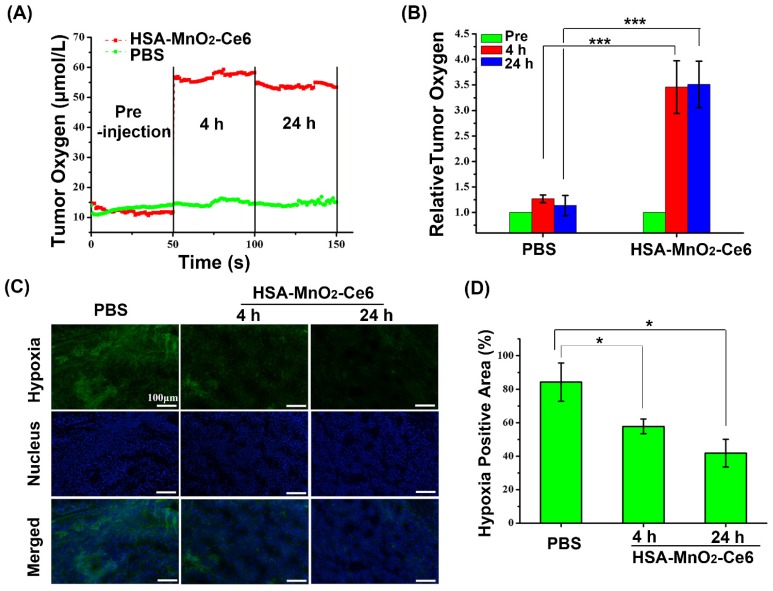Gordijo CR, Abbasi AZ, Amini MA, Lip HY, Maeda A, Cai P, O’Brien PJ, DaCosta RS, Rauth AM and Wu XY; Advanced Functional Materials. 2015;25(12):1858–1872
doi.org/10.1002/adfm.201404511
Abstract
Manganese dioxide (MnO2) nanoparticles (NPs) were discovered in previous work to be effective in improving tumor oxygenation (hypoxia) and reducing H2O2 and acidity in the tumor microenvironment (TME) via local injection. To develop MnO2 formulations useful for clinical application, hybrid NPs are designed with tailored hydrophobicity and structure suitable for intravenous injection, with good blood circulation, biocompatibility, high tumor accumulation, and programmable oxygen generation rate. Two different hybrid NPs are constructed by embedding polyelectrolyte‐MnO2 (PMD) in hydrophilic terpolymer/protein‐MnO2 (TMD) or hydrophobic polymer/lipid‐MnO2 (LMD) matrices. The in vitro reactivity of the MnO2 toward H2O2 is controlled by matrix material and NP structure and dependent on pH with up to two‐fold higher O2 generation rate at acidic (tumor) pH than at systemic pH. The hybrid NPs are found to be safe to cells in vitro and organs in vivo and effectively decrease tumor hypoxia and hypoxia‐inducible‐factor‐1alpha through local or systemic administration. Fast acting TMD reduces tumor hypoxia by 70% in 0.5 h by local injection. Slow acting LMD exhibits superior tumor accumulation and retention through the systemic administration and decreased hypoxia by 45%. These findings encourage a broader use of hybrid MD NPs to overcome TME factors for cancer treatment.

